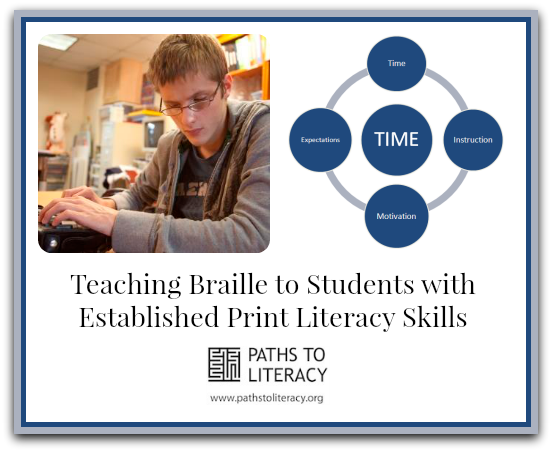Teaching Braille to Students with Established Print Literacy Skills

The ideas in this post grew out of a workshop in Connecticut on Braille Literacy Skills and are posted in their complete form in the Dual Media section of this site.
Older elementary or secondary school students with visual impairments who already know how to read in print may begin learning braille for a variety of reasons. Some may have experienced a sudden visual loss or have a visual condition that is unstable or progressively deteriorating. In many cases, braille is considered when a functional vision / learning media assessment documents that a student's use of print is slow, fatiguing, or inefficient, making it difficult to keep up with academic work. In deciding to add braille to the IEP, the team may also be concerned about future literacy skills as print becomes smaller and reading demands heavier.
Finding appropriate instructional materials, motivating students to persevere with learning braille, and carving out sufficient time for instruction all pose potential challenges. The acronym "TIME" can be used to organize strategies to address the challenges and expectations involved in teaching braille to students with established print literacy skills.
-
T = Time: How much service time should I provide? How do I find time to teach braille? How do I integrate braille into the curriculum?

-
I = Instruction: What approach(es) can I use to teach braille? (commercial & teacher-designed). How do I balance fluency with learning the code? Which is more important, fluent reading or knowing the entire code?
- M = Motivation: How can I motivate my student to learn braille?
-
E = Expectations: What are the goals of braille instruction? How will braille benefit my student in school? After high school graduation?
For a complete list of suggested activities, resources, and teaching strategies for each of these areas, see Teaching Braille to Students Who Already Have a Print Literacy Foundation

